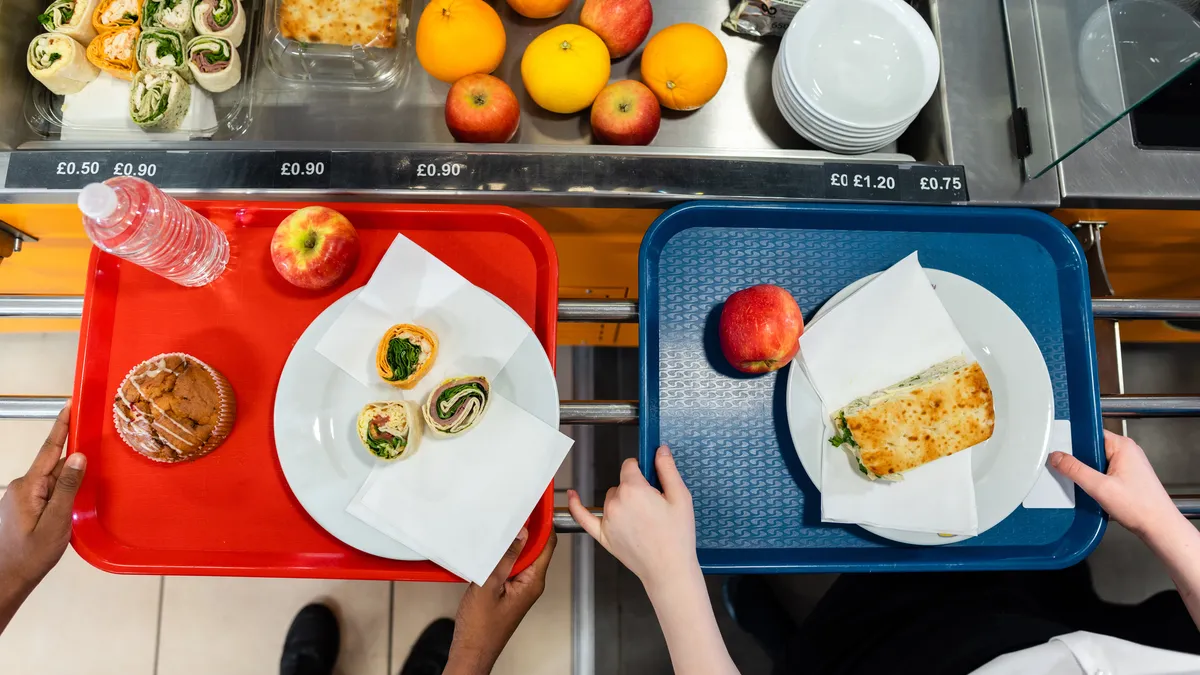Dive Brief:
- The median unpaid school meal debt continued its nearly decade-long climb in 2024, rising to $6,900 per district nationwide — a 26% increase from $5,495 in 2023, according to a recent School Nutrition Association report.
- Meanwhile, more school districts are serving free school meals: 63% of school nutrition directors reported serving free breakfast in 2024-25, up 13% from 2022-23, and 56% reported serving free lunch, up 17% from 2022-23.
- The top five challenges school nutrition directors reported facing in fall 2024 were food costs (98%), labor costs (95%), equipment costs (91%), staff shortages (89%), and procurement issues (87%).
Dive Insight:
Unpaid meal debt is a common challenge for many schools and districts.
However, universal school meal policies are growing in popularity and can be implemented in statewide programs or at the local level through the Community Eligibility Provision, a federal program that allows high-poverty schools to provide free breakfasts and lunches to all students.
One possible explanation for the uptick in districts serving free meals to all students is last school year’s 19% jump in schools participating in CEP. In October 2023, the U.S. Department of Agriculture expanded CEP to an additional 3,000 eligible school districts by lowering the minimum “identified student percentage” threshold of students deemed eligible for free school meals from 40% to 25%.
At the same time, eight states — California, Colorado, Maine, Massachusetts, Michigan, Minnesota, New Mexico and Vermont — have stepped up to implement their own permanent universal school meal programs. That number could soon rise, as other state leaders like New York Gov. Kathy Hochul have pushed for the passage of similar programs in their legislatures this year.
Beyond universal school meal policies, the SNA survey shows a majority of school nutrition directors still have serious or moderate concern over the financial sustainability of their school meal programs within the next three years.
School cafeterias struggled during the COVID-19 pandemic to navigate higher costs and product shortages as a result of inflation and supply chain challenges. Since then, there have been some signs of supply chain issues easing for school nutrition programs, according to a USDA report from December.
Alongside SNA’s survey findings released Tuesday, the association called on Congress to increase the federal school meal reimbursement rate by 40 cents per lunch and 15 cents per breakfast, and to expand access to universal school meal programs to help address meal debt.
“For less than the average price of a latte, school nutrition professionals are expected to prepare and serve a nutritionally balanced lunch, complete with fruits, vegetables, lean protein and milk,” said SNA President Shannon Gleave in a Tuesday statement. “Underfunded school meal programs need additional support from Congress to maintain meal quality, meet additional nutrition standards and ensure access for students in need.”
SNA surveyed 1,390 school districts about their school nutrition programs in October 2024.







 Dive Awards
Dive Awards






